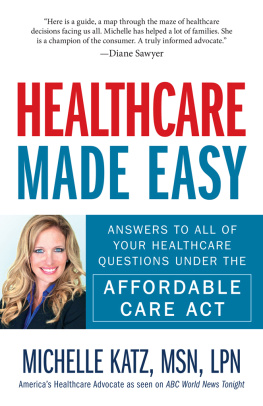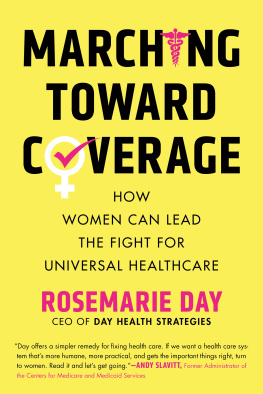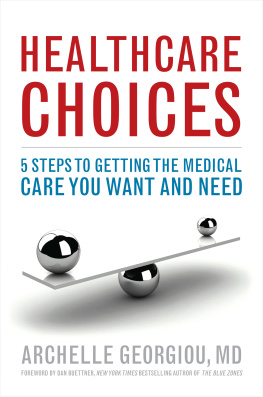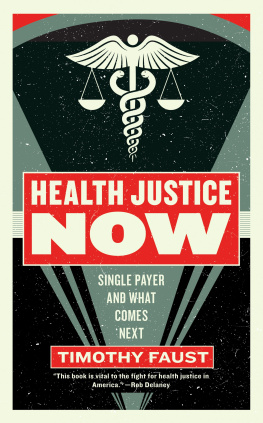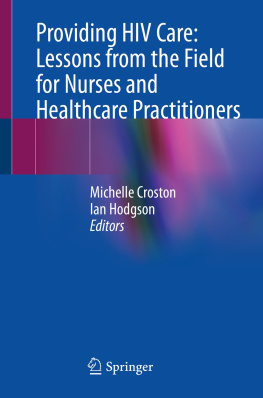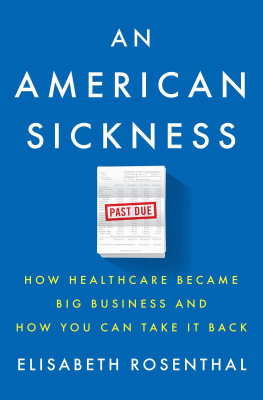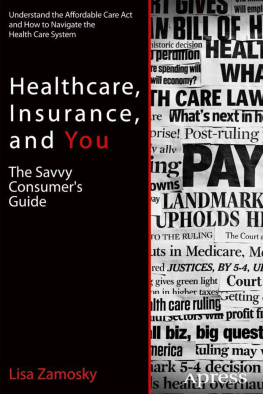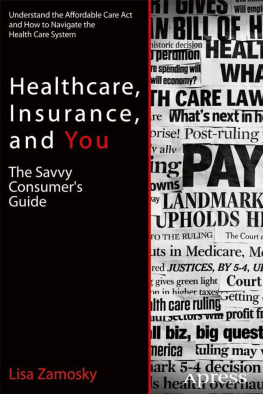Contents
Guide
CONTENTS
PART 1:
HOW THE AFFORDABLE CARE ACT AFFECTS YOU
PART 2:
HOW TO SELECT THE RIGHT HEALTHCARE PLAN
PART 3:
USING YOUR HEALTH INSURANCE BENEFITS WISELY
PART 4:
CONTROLLING YOUR HEALTHCARE COSTS
INTRODUCTION
Whether you agree with it or not, the Affordable Care Act, otherwise known as Obamacare, is here to stay, and it will affect all of us in one way or another. Sections of the law may change slightly in the next few years, keeping those in Congress busy and the rest of us on our toes, but the basic structures of this law will, in all likelihood, remain the same.
The Affordable Care Act is a comprehensive healthcare insurance reform act that provides certain benefits to, and requires certain actions from, all Americans. For example, under the terms of the act, in general everyone must be covered under a health insurance plan, by enrolling in a plan offered at your place of employment, or through a group policy offered by another type of organization, or by purchasing an individual policy. A health insurance marketplace (which well sometimes just call the Marketplace) has been set up to help you do this. If you fail to obtain health insurance coverage, you face a penalty.
People who have difficulty paying for their health insurance may qualify for a federal subsidy that will help them, or they may qualify for assistance under expanded Medicaid programs. (Medicaid programs are state-run programs designed to help low-income residents obtain needed healthcare.)
One of the main purposes of the ACA is to reduce the overall number of Americans who dont have health insurance. In May 2013, this number of uninsured under the age of sixty-five (and therefore not eligible for Medicare, the federal program that provides health insurance for the elderly and some younger people) was estimated to be about 57 million Americans, a number many experts believe would have continued to rise without the ACA.
Two of the main benefits of the ACA are the most popular:
- Health insurance companies can no longer refuse to issue a policy to you based on a preexisting medical condition.
- Young adults, up to age twenty-six, can continue to be covered under a parents policy.
There are other benefits as well, and of course there are some drawbacks. For example, as you may have learned, if you have an insurance plan that does not meet the ACAs minimum requirements for health insurance, it will be canceled and youll have to enroll in a new plan. (There are some exceptions to this, as well see.)
The ACA is intended to improve the efficiency of the overall healthcare system, to reduce overall healthcare costs, and to improve health outcomes for Americans, including those who have traditionally had less access to healthcare. How successful the ACA is in accomplishing these goals remains to be seen.
The purpose of this book is to help guide you through the complexities of the law so that you have a clearer understanding of how the Affordable Care Act works, how it affects you, and the steps youll need to take in order to follow its rules and to experience some of its benefits.
The book is divided into four sections. The first section covers what the Affordable Care Act is and does. The second guides you in selecting a healthcare plan. The third shows you how to use your benefits. The fourth and final section offers suggestions for how to control your healthcare costs. The conclusion provides additional resources for further questions. In the appendix, youll also find some information on choosing a doctor.
Most of the material is set up in a question-and-answer format so that you can quickly find answers to your most important questions about the ACA.
Lets get started!
PART 1
HOW THE AFFORDABLE CARE ACT AFFECTS YOU
You may feel as if understanding the ACA requires you to keep an attorney on speed dial just to answer your questionsand you probably have a lot of questions! It probably seems as if every time you answer one question, another one pops up.
However, while the ACA can seem like a big, overwhelming mass of confusing terminology and complicated requirements, youll be able to understand the whole thing if you just take it a step at a time. Thats what this book is designed to help you do. It is possible to boil down all of the jargon and government-issued statements into plain English.
In , Ive created a series of questions and answers to help you understand what the ACA is, how it affects you, and what steps you need to take in order to meet its requirements. This section will help you understand the basic parts of the law that directly affect individual consumers (like you!). It will define the most common terms youll encounter in dealing with the law, describe the building blocks of the law so that you understand their purpose and how they affect you, and explain some of the systems that have been put in place in order for the law to be carried out, such as healthcare exchanges (the Marketplace).
After reading this section you might just start scratching your head and saying, My goodness, I didnt know it was that easy. At least, I hope so.
BASIC TERMINOLOGY
What exactly is the healthcare exchange (also called the insurance exchange, or the health insurance marketplace)?
Youve probably been hearing a lot about this because there were a number of glitches when it first rolled out. Set up under the Affordable Care Act, its a new way to find healthcare coverage. It went into effect with a lot of fanfare on October 1, 2013 for individuals and small business owners who have lost their coverage or who do not already have it.
Basically, you go to a central website and compare the various health insurance options available in your state, as provided by various private companies. You can sign up for your health insurance through the website. You can also determine if you are eligible for a financial subsidy or if you qualify for a state Medicaid program. If you have trouble understanding the options, you can call a navigator or meet with one in person.
Whats the difference between a state-run exchange and the federal exchange?
Youll use the exchange that is relevant to your state, and the exchanges vary from state to state. You can find out what kind of state exchange/marketplace you are living in by going to www.statereforum.org/where-states-stand-on-exchanges.
If youre living in a state that is implementing a State-Based Marketplace (SBM), that means the state government is responsible for all plan functions: quality healthcare plans; premium fees; oversight/monitoring/eligibility/enrollment; outreach/education; and consumer complaints.
If you live in a state thats implementing a Partnership Marketplace, these responsibilities are taken over by the federal government, although the state government has responsibility for plan management and/or consumer assistance.
Finally, if your state has a federally facilitated Marketplace, that means all these functions are the responsibility of the federal government.
Some of the exchanges work better than others, but its fair to say that in any case youll need a little patience to use any of them effectively.
What are essential health benefits?
The Affordable Care Act specifies that all private insurance companies must cover at least ten categories of benefits; these are called essential health benefits (EHB). Each state decides the specifics of coverage, so exactly what form your coverage in each of these categories takes depends on where you live and which insurance company you pick. You can check the guidelines for your state at www.cms.gov/CCIIO/Resources/Data-Resources/ehb.html.

